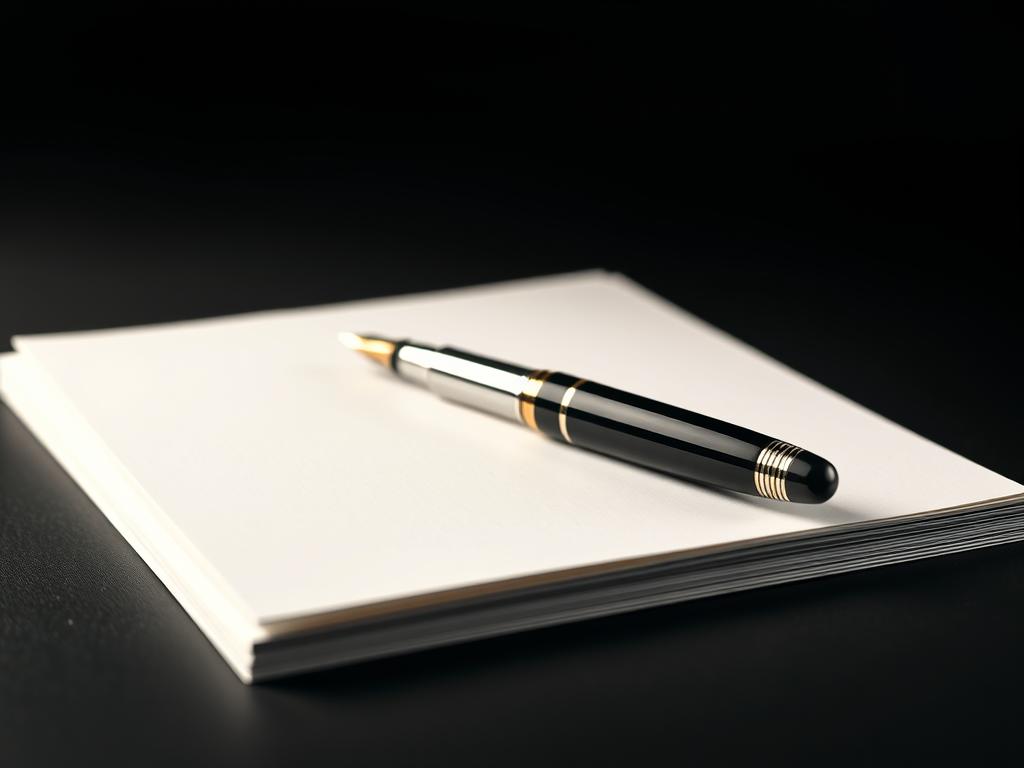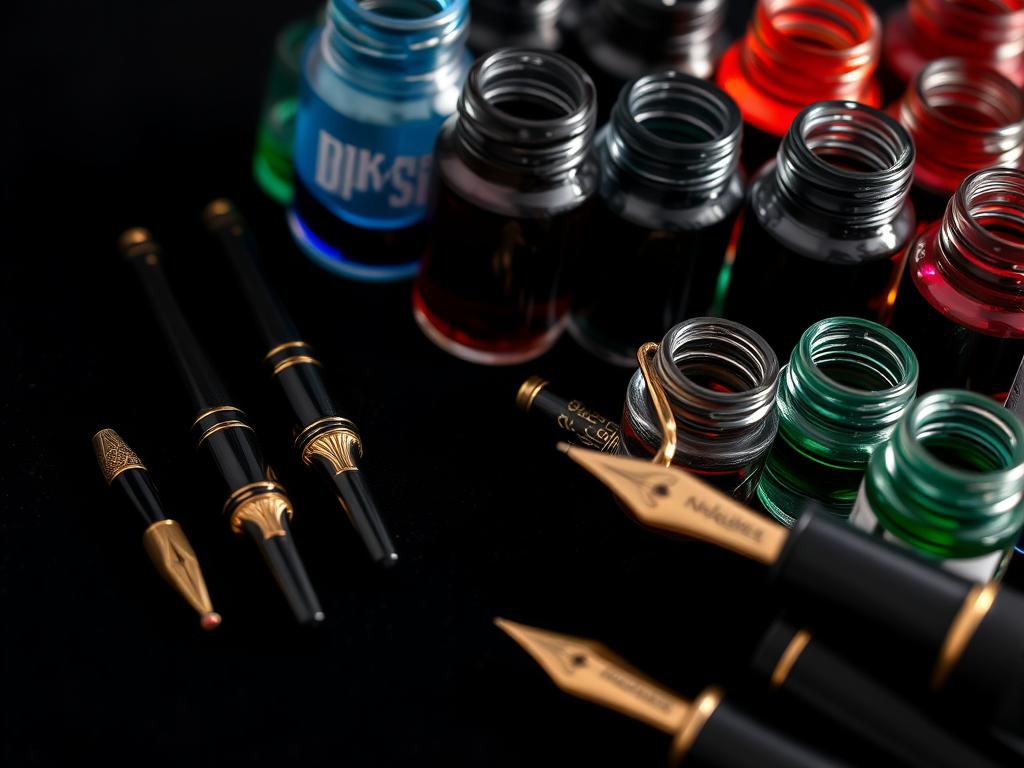Entering the world of high-end writing instruments can feel overwhelming. With countless designs, materials, and features available, knowing where to start is essential. This comprehensive guide simplifies the process for newcomers and seasoned collectors alike, focusing on what truly matters when selecting a premium writing tool.
Before exploring brands or styles, consider how the pen will be used. Will it serve as a daily companion for notes and tasks, or is it meant for special occasions? The answer shapes decisions about durability, weight, and ink type. For example, sleek titanium models suit frequent use, while ornate gold-plated designs may better fit celebratory moments.
This resource dives into critical factors like nib performance, grip comfort, and material quality. It also compares popular models from trusted makers, highlighting how design choices impact writing feel. Real user experiences and expert opinions help identify options that balance aesthetics with reliability.
Key Takeaways
- Define your primary use case before evaluating specific models
- Balance visual appeal with practical features like ink flow and grip design
- Explore comparisons of popular brands to find your ideal match
- Consider both short-term preferences and long-term value retention
- Leverage expert insights to navigate technical specifications confidently
Introduction to the World of Luxury Pens
For centuries, elegant writing tools have symbolized refinement and intellect. These instruments carry stories of historic agreements, literary masterpieces, and personal milestones. Today, they blend tradition with innovation, offering tools that elevate everyday tasks into moments of artistry.
The Timeless Appeal of Elegant Writing Instruments
High-end writing devices aren’t just tools—they’re heirlooms. Crafted from precious metals or polished resins, they reflect meticulous attention to detail. Many collectors describe the tactile pleasure of a perfectly balanced fountain pen gliding across paper as unmatched.
Beyond functionality, these items often become signature accessories. A sleek rollerball might accompany business contracts, while a hand-painted fountain pen could grace wedding invitations. Their designs whisper sophistication, whether through minimalist lines or intricate engravings.
Overview of the Luxury Pen Landscape
The market today caters to diverse tastes. Classic brands maintain loyal followings with heritage designs, while newer makers experiment with bold colors and sustainable materials. Three primary styles dominate:
- Fountain pens: Prized for smooth ink flow and customizable nibs
- Rollerballs: Combine convenience with rich ink saturation
- Ballpoints: Ideal for quick notes and travel-friendly use
Modern innovations include quick-dry inks and ergonomic grips, proving that even centuries-old concepts evolve. As we explore technical features later, you’ll discover how these details shape your writing experience.
Understanding the Purpose Behind Your Purchase
Every pen tells a story, but its plot depends on where and how it’s used. A tool meant for jotting grocery lists differs from one reserved for signing contracts. This distinction shapes everything from ink viscosity to barrel thickness, making clarity about your needs the foundation of any decision.

Everyday Writing Versus Special Occasions
For daily tasks, prioritize smooth ink flow and fatigue-free grips. Quick-drying formulas prevent smudges on standard paper, while textured barrels keep your hand steady during marathon note-taking. One collector notes, A lightweight design feels like an extension of your fingers by lunchtime.
Ceremonial pieces demand different traits. Thick, pigment-rich ink makes signatures pop on premium stationery. Weightier builds add gravitas to milestone moments. Consider how often you’ll use it—time-tested mechanisms like screw caps prevent leaks in rarely used pens.
Paper texture also guides ink selection. Rough sheets work best with oil-based formulas, while satin finishes showcase water-based hues. Test combinations to find pairs that elevate your writing experience without feathering or bleed-through.
Ultimately, aligning a pen’s strengths with your needs ensures it becomes a trusted companion rather than a drawer ornament. Whether scribbling reminders or etching vows, the right balance of form and function turns ordinary marks into meaningful moments.
choosing first luxury pen: Key Factors and Considerations
Selecting a premium writing instrument involves more than aesthetics—it’s about balancing artistry with practicality. Start by examining design elements that signal quality, like seamless barrel construction and precisely aligned nibs. These details ensure smooth operation while reflecting the maker’s craftsmanship.
Essential Features and Design Elements
Premium materials like sterling silver or hand-polished resin elevate both durability and visual appeal. A textured grip prevents slippage during extended use, while balanced weight distribution reduces hand fatigue. One collector notes, A well-designed instrument feels weightless yet substantial—like it’s working with you, not against you.
Don’t overlook the protective case. High-quality leather or aluminum storage solutions safeguard against scratches and temperature changes. Brands that prioritize craftsmanship, like those detailed at Noble Quills, often include custom cases that complement the pen’s style.
Budget, Investment, and Long-term Value
Entry-level options ($150-$300) offer reliable performance with stainless steel nibs and durable plastics. Mid-range picks ($500-$800) introduce precious metals and limited-edition designs. At higher tiers ($1,200+), expect hand-engraved details and rare material combinations that appreciate over time.
Consider how based needs influence value. Frequent travelers might prioritize compact models with replaceable cartridges, while home users could invest in heirloom-quality fountain pens. By aligning features with personal use patterns, you’ll enhance both daily experience and long-term satisfaction.
Exploring Types of Pens and Iconic Brands
Mastering the art of fine writing begins with understanding the tools that make it possible. From precision-engineered fountain pens to sleek rollerballs, each style serves distinct creative needs while showcasing masterful design.
Fountain Pens and Their Signature Craft
Fountain pens stand as timeless symbols of craftsmanship. Artisans shape nibs from metals like gold and platinum, ensuring smooth ink flow for everything from quick notes to elaborate calligraphy. Brands like Namiki elevate this tradition with hand-painted designs inspired by Japanese lacquerware.
Many models feature barrels crafted from premium resins or rare woods. These materials not only enhance durability but also create striking visual contrasts. A Graf von Faber-Castell pen, for instance, might pair a pearwood grip with a palladium-coated clip.
Highlighting Renowned Brands
Iconic makers blend heritage with innovation. Montblanc’s Meisterstück series delivers precision-balanced weight, while Caran d’Ache pens dazzle with Swiss-engineered geometric patterns. For those drawn to calligraphy, brands offer specialized nibs—Pilot’s FA nib flexes effortlessly for dramatic stroke variation.
Here’s how leading names compare:
- Pelikan: Known for piston-filling systems and vibrant striped designs
- Aurora: Italian-made pens with 14k gold nibs tuned for responsiveness
- Lamy: Modern German engineering with interchangeable nibs
Material choices often define a brand’s identity. Montegrappa uses sterling silver for intricate engravings, while Tibaldi revives historic celluloid formulas. Discover detailed comparisons in our expert brand guide to find instruments matching your style and writing rhythm.
Material, Design, and Customization Considerations
A writing instrument’s character emerges from its components and the care put into its creation. Premium materials and tailored details turn functional tools into cherished possessions, blending practicality with personal expression.
Choosing the Right Materials and Finishes
The pen body’s composition directly impacts comfort and longevity. Celluloid offers lightweight elegance, while metals like titanium provide rugged durability. A jeweler once remarked, Sterling silver develops a rich patina over time—it ages with stories.
| Material | Weight | Durability | Best For |
|---|---|---|---|
| Celluloid | Light | Moderate | Frequent writing |
| Sterling Silver | Medium | High | Heirloom pieces |
| Titanium | Heavy | Extreme | Travel use |
Hand-polished finishes resist fingerprints and maintain luster. Brushed surfaces hide minor scratches, ideal for daily carry. Always test how the material feels during extended pen writing sessions—textured grips prevent slippage without causing fatigue.
Personalization: Engravings and Unique Details
Custom engravings transform instruments into one-of-a-kind treasures. Initials, dates, or short phrases add sentimental value. Some brands laser-etch patterns that complement the pen body’s contours.
When selecting ink cartridges, weigh convenience against customization. Standardized cartridge systems simplify refills, while piston mechanisms allow rare ink experimentation. Converters bridge both worlds, letting users switch between bottled inks and cartridge convenience.
Thoughtful choices in material and design ensure the instrument adapts to your lifestyle. Whether opting for a gemstone clip or a matte-black cartridge holder, these details make every stroke distinctly yours.
Enhancing Your Writing Experience with Nib and Ink Options
The heart of any premium writing instrument lies in its nib—the delicate metal tip that transforms thoughts into ink. This component dictates how words flow onto paper, making it the most personal part of a writing tool. Let’s explore how to match nib characteristics to your style and maintain peak performance.

Understanding Nib Sizes, Types, and Flexibility
Nib sizes range from ultra-precise extra fine (0.3mm) to bold broad (1.5mm). Stub nibs create crisp line variations perfect for calligraphy, while flexible options respond to pressure changes for expressive scripts. A stationery expert notes, Your writing angle determines ideal nib width—steep writers often prefer finer points.
| Nib Type | Line Width | Best For |
|---|---|---|
| Extra Fine | 0.3-0.5mm | Detailed notes, small handwriting |
| Medium | 0.7-0.9mm | Everyday writing, signatures |
| Stub | 1.1-1.5mm | Decorative scripts, headers |
Best Practices for Ink Refilling and Maintenance
Always flush the nib with lukewarm water before switching ink colors. For cartridge systems, press firmly until you hear a click—this ensures proper sealing. Converter users should twist slowly to avoid air bubbles that disrupt ink flow.
Common mistakes include using excessive pressure (which bends nib tines) and storing pens horizontally (leading to leaks). Weekly cleaning prevents dried ink buildup. As one restorer advises, Treat your nib like a violin string—gentle touches produce the sweetest results.
Pairing the right nib with quality ink elevates every stroke. Experiment with quick-dry formulas for left-handed writers or shimmering pigments for artistic projects. Remember: a well-maintained nib ages like fine wine, gaining character while staying reliable.
Evaluating Brand Reputation and Customer Feedback
A pen’s true value emerges not just from its design but from the voices of those who wield it daily. Savvy buyers combine insights from seasoned users with a brand’s historical credibility to make confident choices.
Why Customer Reviews and Brand Heritage Matter
User testimonials reveal how pens perform beyond marketing claims. One collector shared, My handwriting transformed when I switched to a model praised for its balanced size—the grip just fit my hand better.
These real-world accounts highlight practical features like ink consistency and barrel comfort that specs alone can’t convey.
Established brands often maintain rigorous quality standards refined over decades. For example, companies with century-old workshops typically use time-tested nib alignment techniques. This heritage reassures buyers about durability, especially when investing in higher-priced pieces.
Common praise points in reviews include:
- Precision-engineered nibs that adapt to individual handwriting styles
- Ergonomic designs reducing fatigue during long sessions
- Consistent ink flow across various paper types
Critiques often focus on issues like scratchy nibs or loose caps—flaws that reputable brands address through warranties. By comparing feedback across forums and retail platforms, patterns emerge. Japanese brands frequently receive accolades for fine nibs, while European makers excel in ornate detailing.
Understanding these trends helps people match instruments to their unique way of writing. A left-handed artist might seek pens with quick-dry ink based on user suggestions, while a journal keeper could prioritize smooth mechanisms for daily entries. This research bridges expectations with reality, turning purchases into partnerships between maker and user.
Conclusion
Crafting your signature style starts with the right tool in hand. Whether prioritizing a stub nib for artistic flourishes or a balanced design for daily use, every detail matters. Trusted makers like Montblanc and Namiki set industry standards through decades of refining pen features that marry form with function.
Understanding materials and customization options ensures your instrument aligns with how you hold pen to paper. For those drawn to expressive scripts, nib flexibility and ink paper compatibility transform ordinary notes into keepsakes. Regular maintenance—like gentle cleaning and proper storage—preserves performance for years.
A well-matched writing companion becomes more than a tool—it’s an investment in craftsmanship. Explore the significance of thoughtful selection to discover how premium instruments elevate both personal and professional moments. Let this guide steer your journey toward a piece that writes your story, one confident stroke at a time.
FAQ
What makes fountain pens different from regular ballpoint pens?
Fountain pens use liquid ink that flows through a nib, offering smoother, more expressive writing. Their design often includes premium materials like gold or resin, and they allow customization through nib sizes and ink types for a tailored experience.
How do I decide between a fountain pen for daily use versus special occasions?
For everyday writing, consider lightweight designs with durable materials like stainless steel. Brands like Lamy or Pilot offer reliable options. For special events, look for handcrafted details from makers such as Montblanc or Namiki, which combine artistry with heirloom quality.
What nib size is best for someone new to fountain pens?
Medium nibs are versatile for most handwriting styles. Those preferring finer lines might opt for extra-fine nibs, while broader options like stub nibs add flair to calligraphy. Testing different sizes helps match personal preferences.
Why do materials like resin or precious metals matter in a luxury pen?
High-quality materials enhance durability and aesthetics. Resin provides a lightweight feel, while metals like sterling silver or lacquer finishes elevate the pen’s visual appeal. These choices also reflect craftsmanship and brand heritage.
Can I personalize a luxury pen to make it unique?
Many brands, including Caran d’Ache and Graf von Faber-Castell, offer engraving services. Custom nib grinds or limited-edition finishes also add individuality, turning the instrument into a meaningful keepsake.
How important is ink compatibility with fountain pens?
Using high-quality ink prevents clogging and ensures smooth flow. Brands like Pelikan or Waterman provide reliable cartridges or bottled inks. Avoid waterproof or glitter inks unless the nib is designed for them, as they can damage the feed.
What should I look for in customer reviews when selecting a luxury pen?
Focus on feedback about nib performance, ergonomics, and long-term durability. Reviews highlighting a brand’s customer service—like Aurora’s nib replacement programs—can also indicate reliable post-purchase support.
Are luxury pens a good investment over time?
Well-maintained pens from esteemed brands often retain or appreciate in value. Limited editions, such as those from Sailor or Visconti, are particularly sought after by collectors, making them both functional tools and potential heirlooms.


